I used to be ashamed of my skin.
You may not know it now, but I used to have terrible acne. And I was embarrassed about it. Have you ever heard the term “pizza face”? That most definitely could have been used to describe the appearance of my skin throughout elementary (yes, I got my first zit in 4th grade!), middle, and high schools.
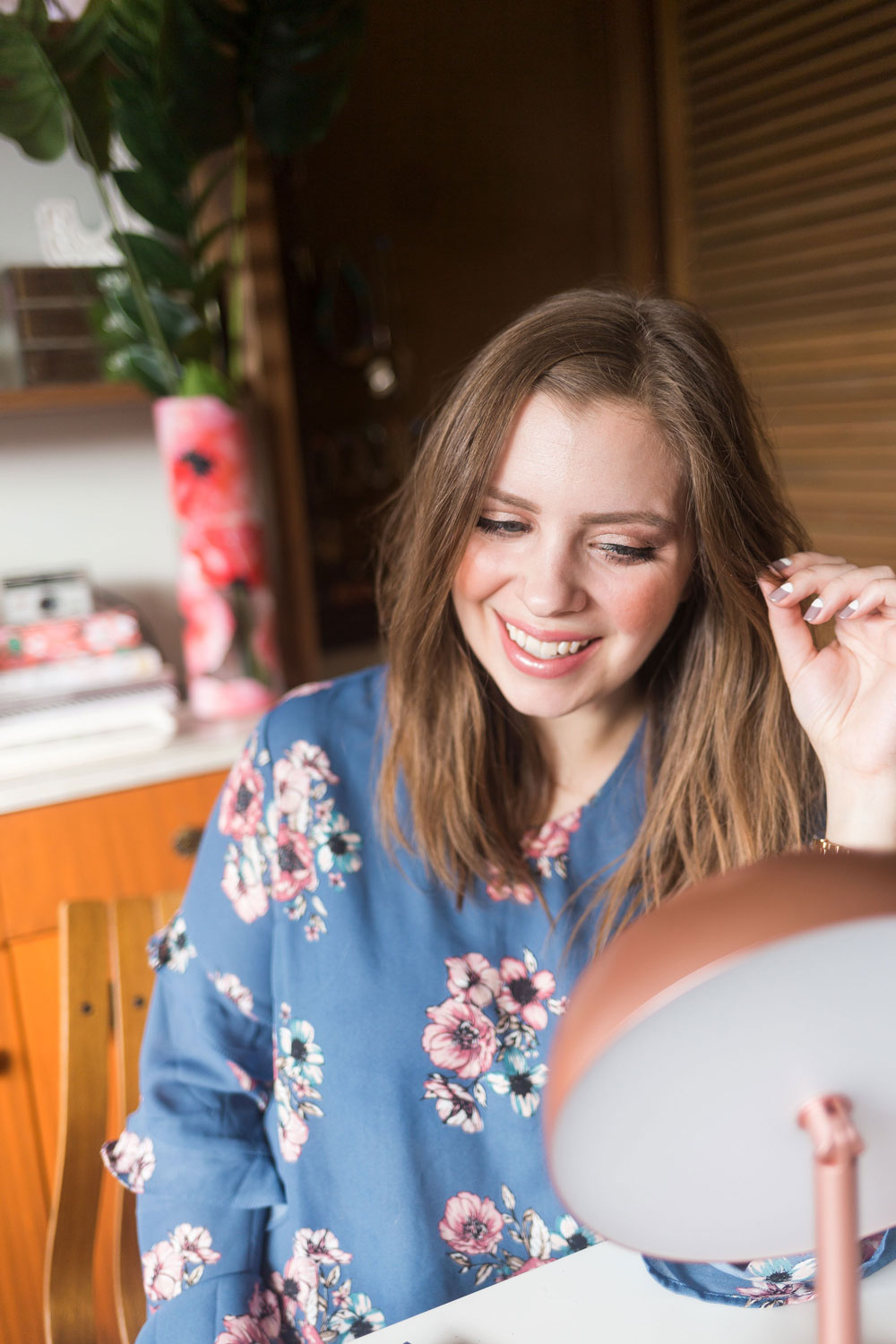 Disclosure: This post contains a review of a complimentary skin treatment provided to me by Seven Inlets Spa. All opinions are my own!
Disclosure: This post contains a review of a complimentary skin treatment provided to me by Seven Inlets Spa. All opinions are my own!
Deep, painful, red lumps and bumps covered my cheeks and chin. In my teens, it also covered my back, upper arms, and even sometimes the bumps popped up on my chest. To hide my embarrassment, I slathered on foundation, often in a shade that was much too dark for my skin tone, and to mask the body acne, I wore clothes that covered it. It was honestly hard to tell sometimes what tone my skin actually was beneath all of the redness and irritation I created.
Recently, I was invited to the Seven Inlets Spa at Little Creek Casino for a facial, and it was this experience that reminded me that even just a few years ago, I would have been terrified to have an esthetician remove my makeup. In fact, my conversation with Hannah, my esthetician during my facial, inspired me to share my skin journey and what I’ve learned over the years. She explained that she sees clients all the time who feel embarrassed or ashamed of their skin when they come in for a facial.
Not only did I not want the help of an esthetician, but I was too afraid to go to a dermatologist, fearing that they would give me the same “bad advice” that every other doctor gave me. (Mostly it was either to tell me “it wasn’t that bad” and then prescribe medications that didn’t work for my skin.)
Instead, I threw everything at it – alcohol laden pads to strip everything, even the good oils, away. Benzoyl Peroxide creams, Salicylic Acid based gels. I tried mud masks, high concentrations of tea tree oil, hydrogen peroxide, baking soda, and more. I visited websites and forums to try to replicate other peoples good results in getting rid of their breakouts. You name it, I probably tried it.
No matter what I did, the pimples persisted.
Then, I started hormonal birth control around the time I left for college. I also stopped using so many skincare products on it, mostly out of laziness, but also because I didn’t need them anymore. I used less foundation, ultimately using just a light wash of mineral powder to even out my skin tone from some of the hyperpigmentation left over from blemishes long gone. I was thrilled. I thought I had finally cured my acne for good.
Until it returned.
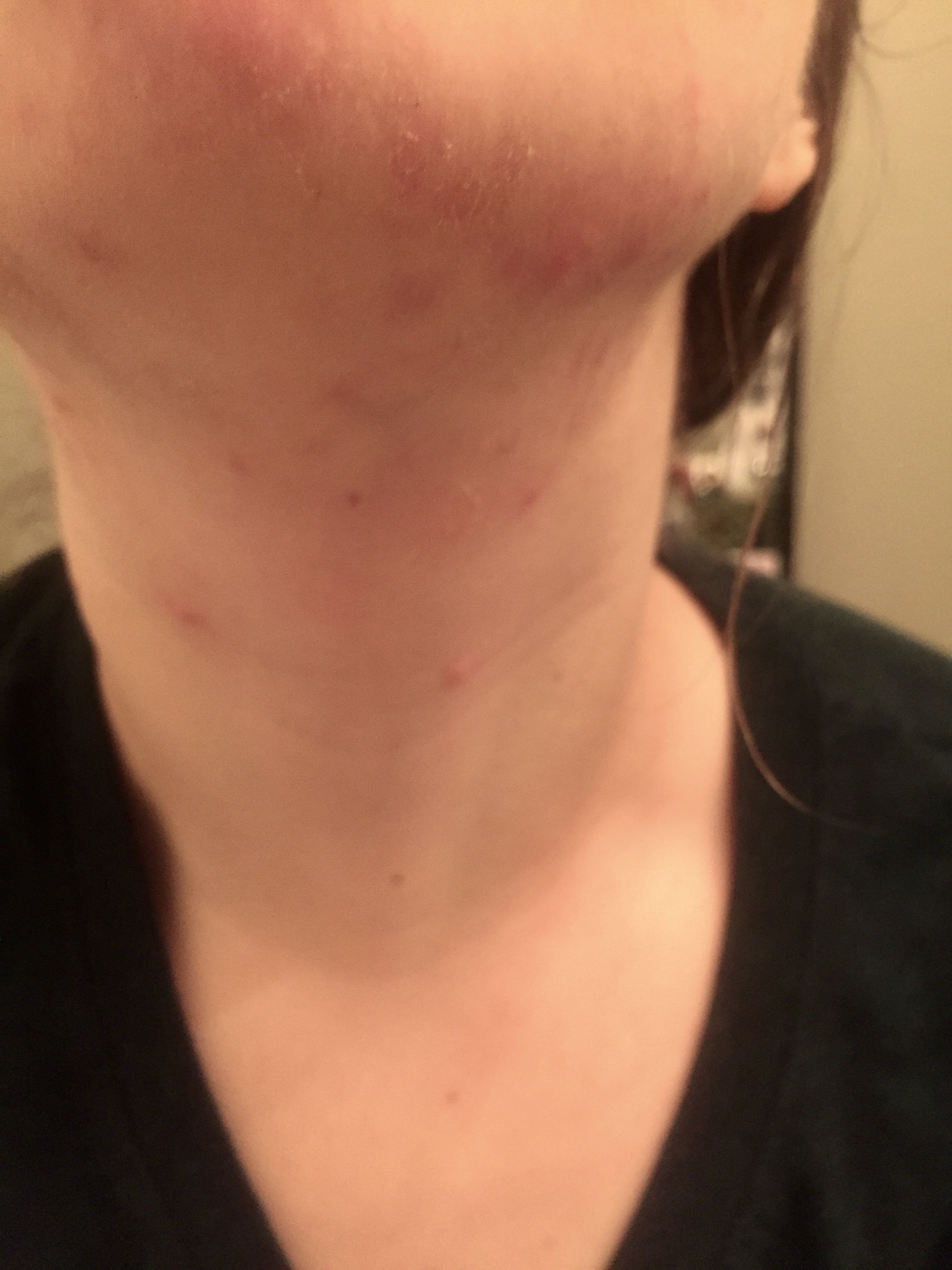
My acne, when it came back. While it doesn’t look that bad in this photo, it was extremely painful and uncomfortable.
At that point, I was in my mid-20s. From 18-24, I was basically acne free. Free enough, anyway, that I often went without makeup, or only used a small amount, and didn’t think too much of it. An occasional pimple here or there around that time of the month wasn’t unusual on my chin, and of course, I’ve always had blackheads and sebaceous filaments. But shortly before I turned 26, it came back with a vengeance.
This time, it bordered my jawline, careened down my neck, and some were so deep-rooted that it was painful to turn my head to the side. I wore turtlenecks, scarves, and high collars to hide my skin. But sometimes, I had to let it all hang out because it would be too painful if something were to touch one of those cystic bumps.
I had actually just started blogging right before this, and I was ashamed to admit that my skin was the worst it had ever been in recent memory. I started lashing out to those around me, I was moody and irritable because I felt ugly. It probably didn’t help that when I did reach out for help, some professionals were so uneducated about acne that they asked me if I was “being sure to really wash my face in that area.” If they only knew.
Again, I found myself trying the same old things on my skin – throwing harsh, stripping skin ingredients at the problem. Why was it back? Wasn’t I too old to be still battling hormonal acne?!
As you can imagine, the answer is obviously no. You’re never too old to deal with breakouts from acne. Acne for me is triggered by stress and hormones. I don’t find a diet correlation, so for me, cutting out dairy, eating plant-based, or avoiding chocolate and coffee didn’t make a difference. I break out regardless of these things. Everyone is different, and I encourage you to try (and stick with) what seems to work best for your body.
From ages 25-27, my body went through another change of hormones. Why, I can’t tell you for sure, but in talking to my mom, who experienced the same thing during this time period, and other women currently in this age bracket, they often find the same.
So why am I telling you all of this? To show that if you have suffered from acne, breakouts, or even just skin that you aren’t happy with, then you are not alone. No matter how perfect someone’s skin might look, it doesn’t always mean that there wasn’t a struggle to get there. In fact right now, as I battle summer allergies and approach that time of the month, a break out has surfaced. I still battle breakouts, and I still feel bad about my skin from time to time. But ultimately, I want to share that there IS a light at the end of the tunnel, and if I was able to get through acne, then you can too!
Because I struggled so much with a lack of knowledge and misinformation, I’ve tried to make it my mission to be better educated now about skincare. Being a blogger, I’ve had a lot of easy access to trying the latest and greatest, have had the chance to talk to amazing experts, and ask a lot of questions. Of course, I’ve also received bad advice, too, and want to let you know that I’m absolutely not a medical professional, or even a skincare professional. I listen to those that are professionals, I read a lot about skincare and health, and I do my best to share the most accurate information. These experiences have led me to better address my own skin issues as they come up, and make recommendations to friends who have shared their skin concerns with me.
Are you struggling with skin problems? Whether you have acne or have another skin concern, the following is what I wish I had known as a teenager, and again in my mid-20s when battling hormonal fluctuations and changes in my skin.
 Step 1: Know Your Skin Type
Step 1: Know Your Skin Type
The foundation for an excellent skin care regimen is to know your skin type. I didn’t know that I had a Combination-Dry skin type for most of my life, which meant that instead of working to hydrate my skin, I was often doing the opposite: drying it out and irritating it further.
So what are the most common skin types?
Oily skin means that you overproduce oil. You’ll often have a shiny t-zone and will want to blot your skin partway through the day. Your work will be to balance your oil. This can be through hydrating your skin enough so that your body stops overproducing, without making your skin looks like an oil slick on the daily and preventing sebum from getting trapped and causing breakouts. Your work will be to avoid products that further irritate oily prone skin, like certain types of makeup (look out for words like “noncomedogenic”) and balance your skin by adding moisturizing oils that won’t clog pores such as Jojoba or Argan.
Dry skin means that your skin is lacking moisture. You’ll often find that you have little to no shine in your t-zone, and the perimeter of your face may feel tight. You may also have patches of dryness in certain spots, especially in the late fall and throughout winter. You might also be sensitive to things like heating and air conditioning, which often dries out your skin further. Your work will be to hydrate, hydrate, hydrate. You can do this through many things: eating healthy fats in your diet like avocado and nuts, drinking more water, and layering products to boost hydration. A multi-layered skincare regimen is your best bet to hydration. Dry skin girls are probably the most likely to have that 20-step Korean Skincare regimen that was all over the beauty magazines a few years ago. For me, that means never missing a hydrating toner, serum, and night cream every night, at a minimum.
Normal skin means that you don’t really have either of the above issues. For the most part, your skin is pretty well-balanced with no shiny or tight areas. The goal for your skin care regimen will be to maintain that, so you’ll want to look for products that are lightweight and balancing.
Combination skin means that you have a combination of the above skin types. You might have a shiny t-zone with dryness on the outer parts of your face, for instance. Your goal is to increase hydration to the dry parts and balance the oily areas. Multi-masking (using a clay mask in the t-zone and a hydrating mask on the other parts of the face, for instance) or layering of skincare can be really helpful for those who battle multiple skin concerns like dry patches and oily spots.
 Step 2: Schedule regular facials
Step 2: Schedule regular facials
Estheticians are a great resource, and have helped me immensely over the years understand my own skin as well as how to treat problems as they arise. In fact, I think speaking to an esthetician was more beneficial than anything a doctor has told me, as prescriptions just never did anything for me. But, everyone is different and I think being sure there’s no underlying medical cause for your acne is a very important part of the process.
I recently was treated to a facial by the Seven Inlets Spa at Little Creek Casino in Shelton, WA and was able to learn a lot from my esthetician, Hannah, during my treatment. In fact, my conversation with Hannah inspired me to share my skin journey and what I’ve learned because she sees clients all the time who feel embarrassed or ashamed of their skin when they come in for a facial.
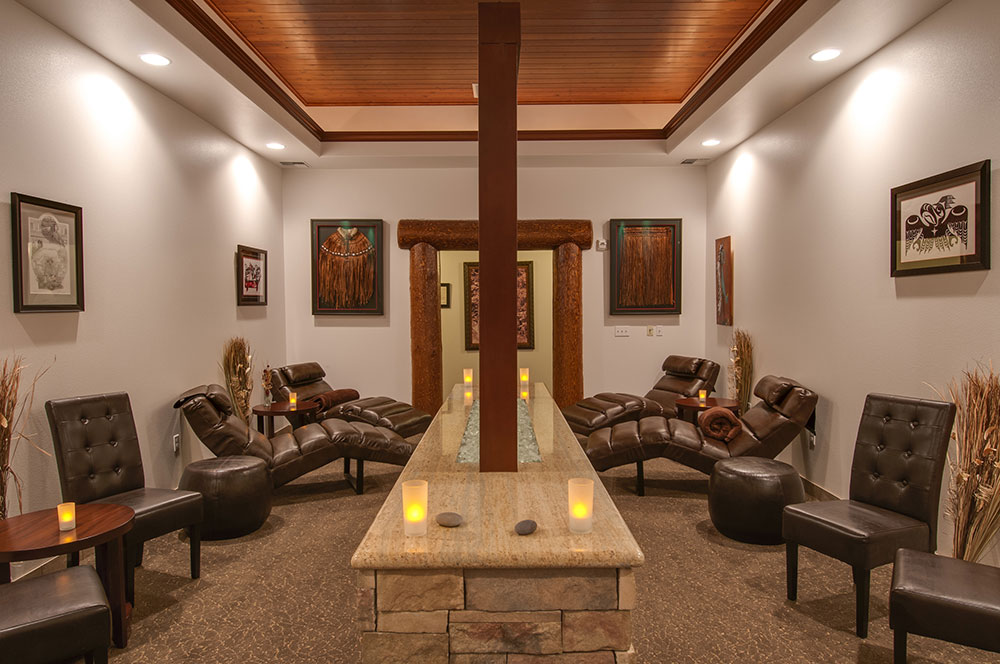 Hannah mentioned that a lot of her clients are there for their first facials and can feel nervous that their skin isn’t in tip-top shape, whether it’s due to aging, scarring, or because of active breakouts. Estheticians aren’t there to judge you for your skin, their job is to take care of your skin, teach you about skincare (if you’re interested, of course) and they will do their best to help you have an amazing experience and feel good in your own skin again.
Hannah mentioned that a lot of her clients are there for their first facials and can feel nervous that their skin isn’t in tip-top shape, whether it’s due to aging, scarring, or because of active breakouts. Estheticians aren’t there to judge you for your skin, their job is to take care of your skin, teach you about skincare (if you’re interested, of course) and they will do their best to help you have an amazing experience and feel good in your own skin again.
If stress is a big trigger for your breakouts, something to consider is that a facial is more than just a skin treatment. It’s a whole body experience, as when you enter a spa, you can’t help but feel relaxed. At Seven Inlets, my favorite pre-facial activity was the Eucalyptus Steam Room. Nothing like breathing in some steam with the soothing herbal scent to make you feel relaxed and rejuvenated!
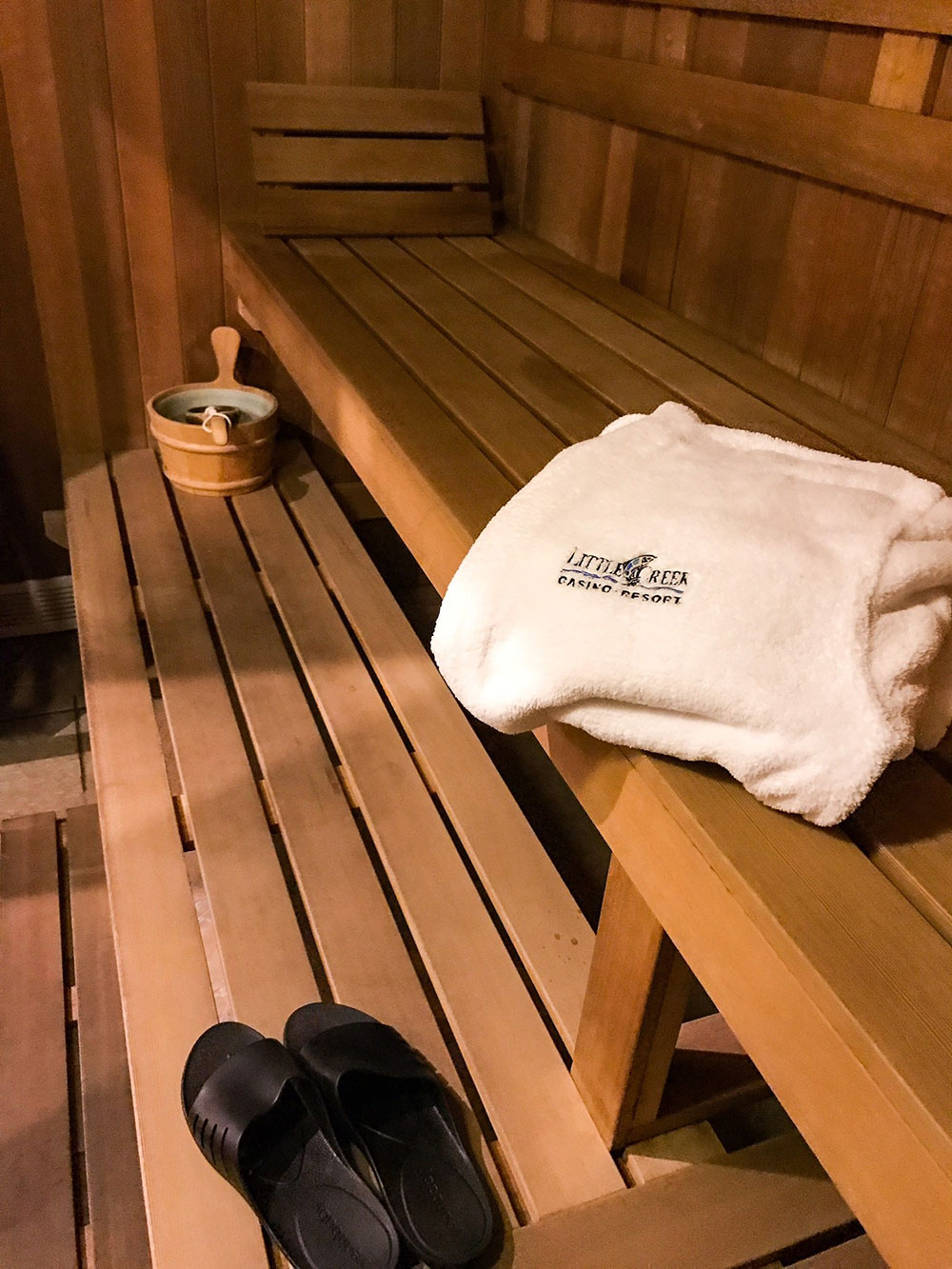 If you’re in the area, Seven Inlets Spa at Little Creek Casino is a beautiful retreat from the hustle and bustle of city life in Seattle, boasting bright and light treatment rooms, kind and caring staff, and Eminence Organic Skincare, which smells great, are the #1 professional organic skincare line, and leave your skin soft and glowing. (If you have a breakout like I did during the treatment, ask for the Eminence Probiotic Mask! It’s amazing and my breakout was gone the next day.) If you’re interested in a facial at with Seven Inlets Spa, I’d highly recommend one of the specials below. Be sure to ask for Hannah and say hi for me!
If you’re in the area, Seven Inlets Spa at Little Creek Casino is a beautiful retreat from the hustle and bustle of city life in Seattle, boasting bright and light treatment rooms, kind and caring staff, and Eminence Organic Skincare, which smells great, are the #1 professional organic skincare line, and leave your skin soft and glowing. (If you have a breakout like I did during the treatment, ask for the Eminence Probiotic Mask! It’s amazing and my breakout was gone the next day.) If you’re interested in a facial at with Seven Inlets Spa, I’d highly recommend one of the specials below. Be sure to ask for Hannah and say hi for me!
Eminence Sun-Kissed Facial 50 min $129
Eminence Organic Suncare refreshing facials are the perfect solution for sun beaten skin. Your skin will look plump and smooth, and complete with a lit-from-within glow!
Cactus Cooler Body Refresher 80 min $149
After a Nectar whole milk soak, a crisp, citrusy-smooth salt scrub leaves skin feeling radiant. Next, you’re coated in a chilled toning, tightening cactus gel that heats and tingles as it works. After a firm wrap, you’ll be drizzled in Agave Nectar Oil that soaks in and leaves you glistening and soft!
Cactus Cooler 50 min Mani $39 // 50 min Pedi $44
Enjoy your feet and hands coated in a chilled toning, tightening cactus gel that heats and tingles as it works.
So how often should you book a facial? Ultimately, it’s up to you, but I like to schedule one every other month when my skin is being troublesome during the fall and winter months, or every 3 months in the spring and summer, when it tends to be better. Depending on your budget, there are a wide variety of options for facials, whether you’re looking for a full spa experience to something straight to the point, no matter where you live. I’ll be sharing some of my favorite high-end as well as budget-friendly options here in the greater Seattle area soon!
Step 3: Seek out a professional for help
Still not having any luck after treating your skin based on skin type and facials from a qualified esthetician? I spent a lot of time trying to hide my skin and being embarrassed. Instead, I should have spent more time seeking help from other experts. I had asked for recommendations from my General Practitioner and was often given something to try, and then I failed to follow up when it doesn’t work. Unfortunately, your doctor can only help so much when you don’t give them feedback.
When you let a doctor know what they’ve prescribed isn’t working, this can also lead them to look into other things that could be causing your acne. Some other potential root causes of acne include conditions such as a hormonal imbalance, PCOS, thyroid problem, allergy, intolerance, or countless other potential diagnoses.
If, like me, you found that your regular doctor wasn’t much help, seek out a specialist like a dermatologist. While it can seem daunting, they’re there to help and answer questions. If your insurance doesn’t cover a specialist, or you’re not able to for whatever reason, there are a variety of online tools you can utilize to get an expert opinion without spending a fortune. I haven’t used any of these personally, but have heard great reviews of Curology.
 Step 4: Stop touching your face
Step 4: Stop touching your face
Have you heard that picking at your skin is the worst thing you can do? Sorry, but I’m not here to give you the okay to do that either. Honestly, picking at acne is a terrible idea and not only will not make you feel better about it, but will slow healing time way down. Yes, I know, easier said than done. (I’m definitely a picker, so don’t feel bad if you are too!)
Picking can also lead to scars, so please, step away from the mirror and occupy your hands when you feel the urge to pick. When you do catch yourself about to pick or touch your face, try putting on a mask or spot treatment instead. If your face and blemishes have something on it, you’ll be much less tempted to touch since you’ll get the product all over your fingers and hands.
Step 5: Be gentle to your skin (and yourself!)
The biggest thing that helped my acne was being gentle to it. Step away from the alcohol-laden Stridex pads and instead, say hello to hydration. I had the biggest change in my skin when I threw away anything specifically targeting acne and instead, kept only spot treatments (and only on the exact bump! Don’t slather this all over your skin.) The rest of my face products targeted dry skin. My skin routine is listed below in case you’re looking for a place to start!
Another thing I should mention is to stop putting the blame on yourself for your acne. For a long time, I was very self-deprecating about the condition of my skin. When someone would compliment me, instead of saying thank you I would deflect and say, “Oh, but my skin looks awful!”
Honestly, stop doing this to yourself. You are beautiful no matter what your skin looks like right now. Everyone will get a break out at some point in their life, and if you happen to be like me and broke out for all of their teens and into their 20s, know you are not alone. It doesn’t make you any less of a person or change who you are inside unless you allow it to.
 Step 6: Establish a skin care routine, and stick with it
Step 6: Establish a skin care routine, and stick with it
Something I was terrible about doing when I was younger was trying something and sticking to it long enough to figure out if it was actually working. Of course, if you end up with a serious rash, breakout, or reaction to a new product, immediately discontinue use. But what I’m referring to is being patient and seeing if a product helps over the course of about 60-90 days.
If you’re seeing your skin condition worsen, it’s probably time to try something else. If you’re seeing improvements, however, stay the course. To get you started with a skincare routine, I’ve outlined the basic steps of my everyday routine below. Yes, it might be a little more extra then you’re used to (or maybe not) but I hope it gives you a jumping off point for what to try if you’re like me and have breakout prone, combination-dry, and slightly sensitive skin.
Morning Skincare Routine for Dry, Blemish Prone Skin
1. Remove overnight grime with micellar water on a cotton round
2. Spray a hydrating facial toner (I like toners with rosewater as a main ingredient)
3. Apply a lightweight serum to skin after toner
4. Moisturize with a lightweight lotion with SPF 30 or higher
Evening Skincare Routine for Dry, Blemish Prone Skin
1. Remove makeup with makeup remover wipe, micellar water, or makeup removing solution
2. Wash face with gentle cleanser (look for “creamy”, “lotion” or “cleansing oil” in the product name)
3. Spray a hydrating facial toner
4. 1-3x per week, apply AHA acid for exfoliation (you can use an exfoliating pad, mask, or leave on product)
5. Apply a serum, I gravitate towards anti-aging serums with hyaluronic acid, collagen, and peptides in the ingredients for hydration
6. Spot treat with your favorite product. I personally have found the best luck with dotting a tea tree oil-vitamin E blend (don’t use straight tea tree oil!) onto blemishes directly.
7. For drier skin, a lightweight hydrating moisturizer and eye cream can be applied
8. Finish skin routine with a hydrating night cream to lock it all in
Step 7: Combatting Scars and Hyperpigmentation
Thanks for your questions on this topic. More coming soon!
Overall, I find a layered approach to skincare, and my skin in general, to be the key in keeping my skin clear and balanced. That means understanding what my skin needs, from the inside out, and working to maintain what makes it happy the best I can. Is it a lot of work? Absolutely. But for me, my skin is such a vital part of my self-identity that I don’t mind putting the extra effort forth, especially because I know what it used to be like and how far I’ve come.
Now I’d love to hear from you! What has your skin journey been like? Are there any questions you have about acne, skincare, or your own skin that I can help you with? I’d love to hear about your concerns, struggles, and skin wins in the comments!

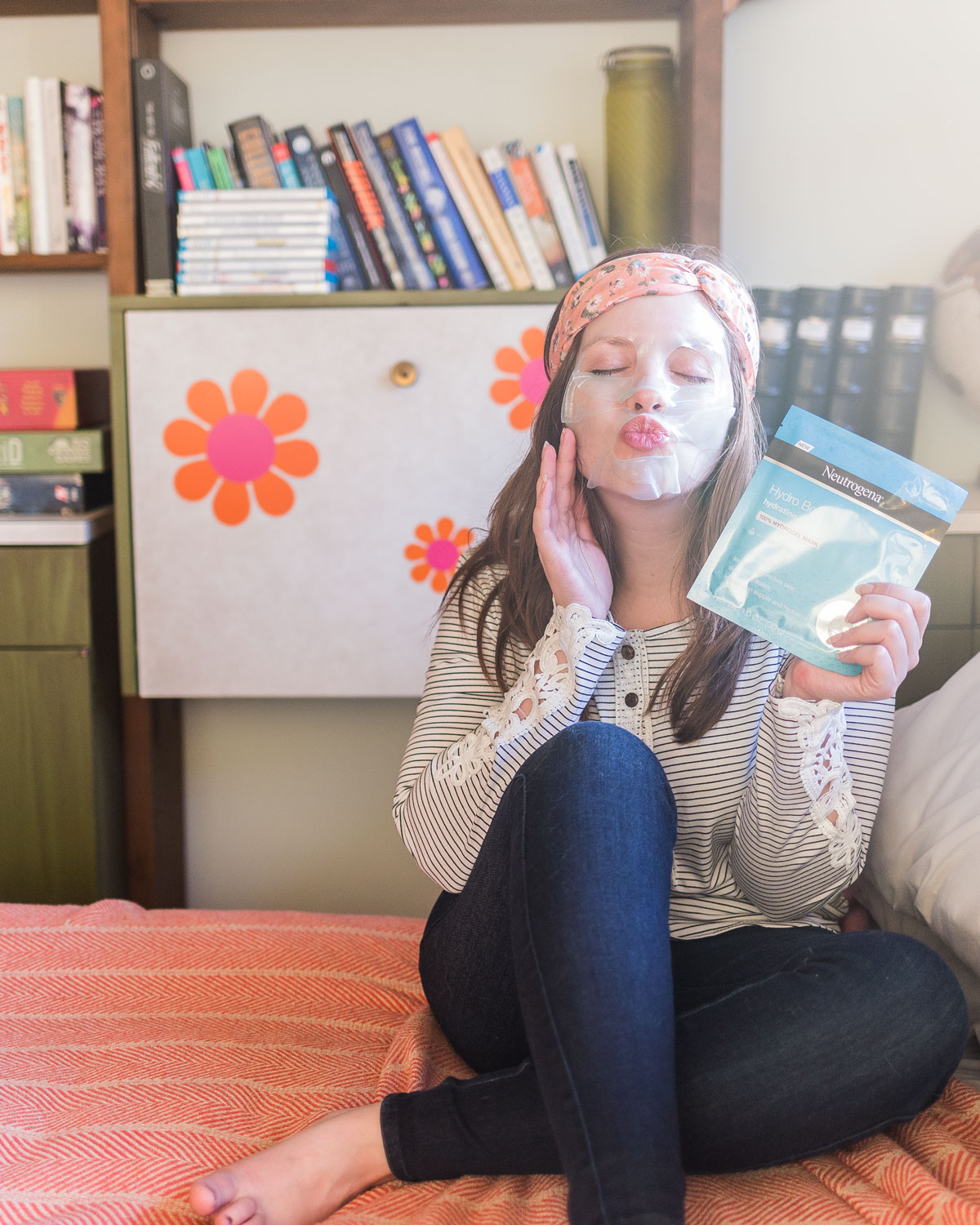 Step 1: Know Your Skin Type
Step 1: Know Your Skin Type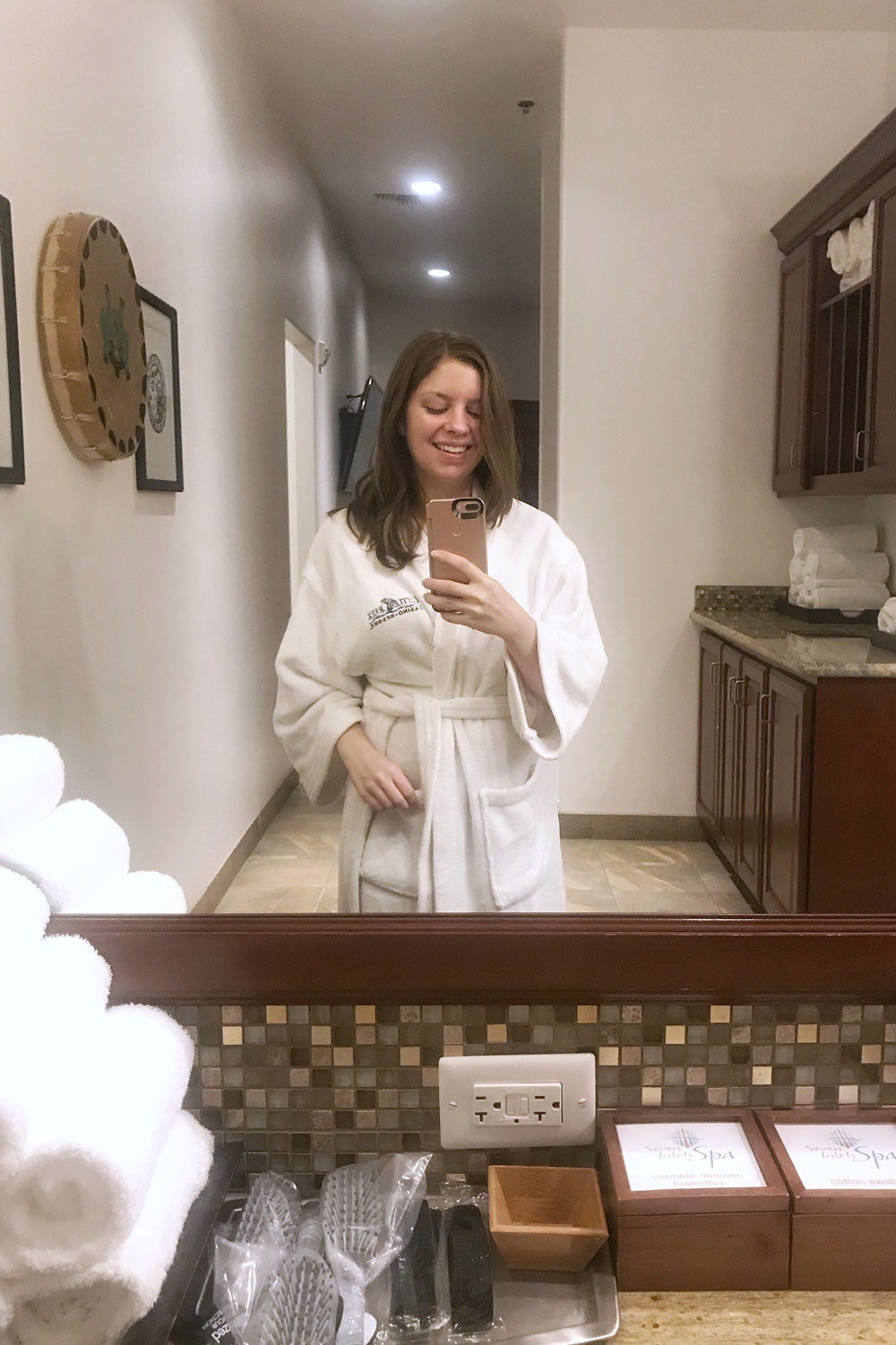 Step 2: Schedule regular facials
Step 2: Schedule regular facials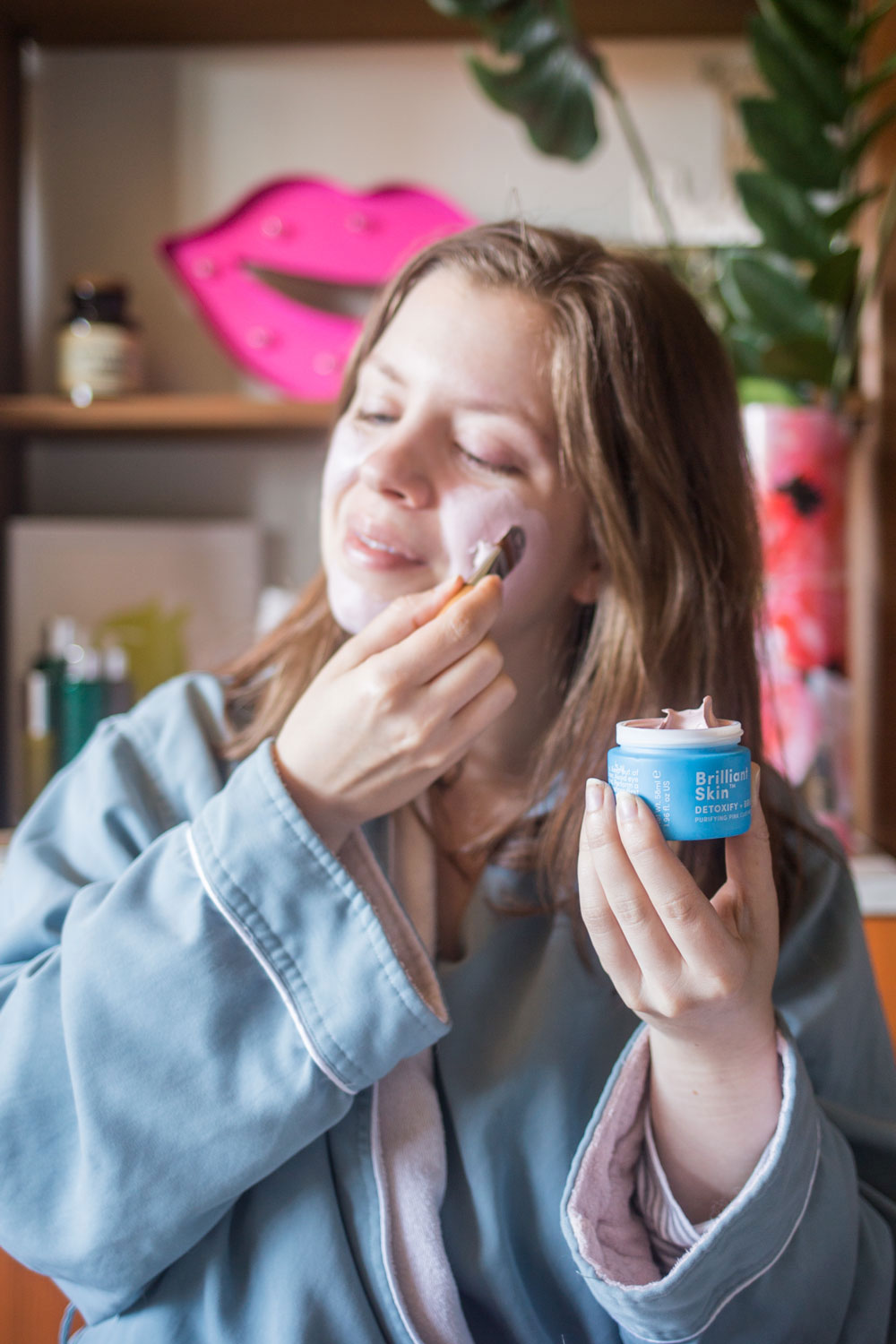 Step 4: Stop touching your face
Step 4: Stop touching your face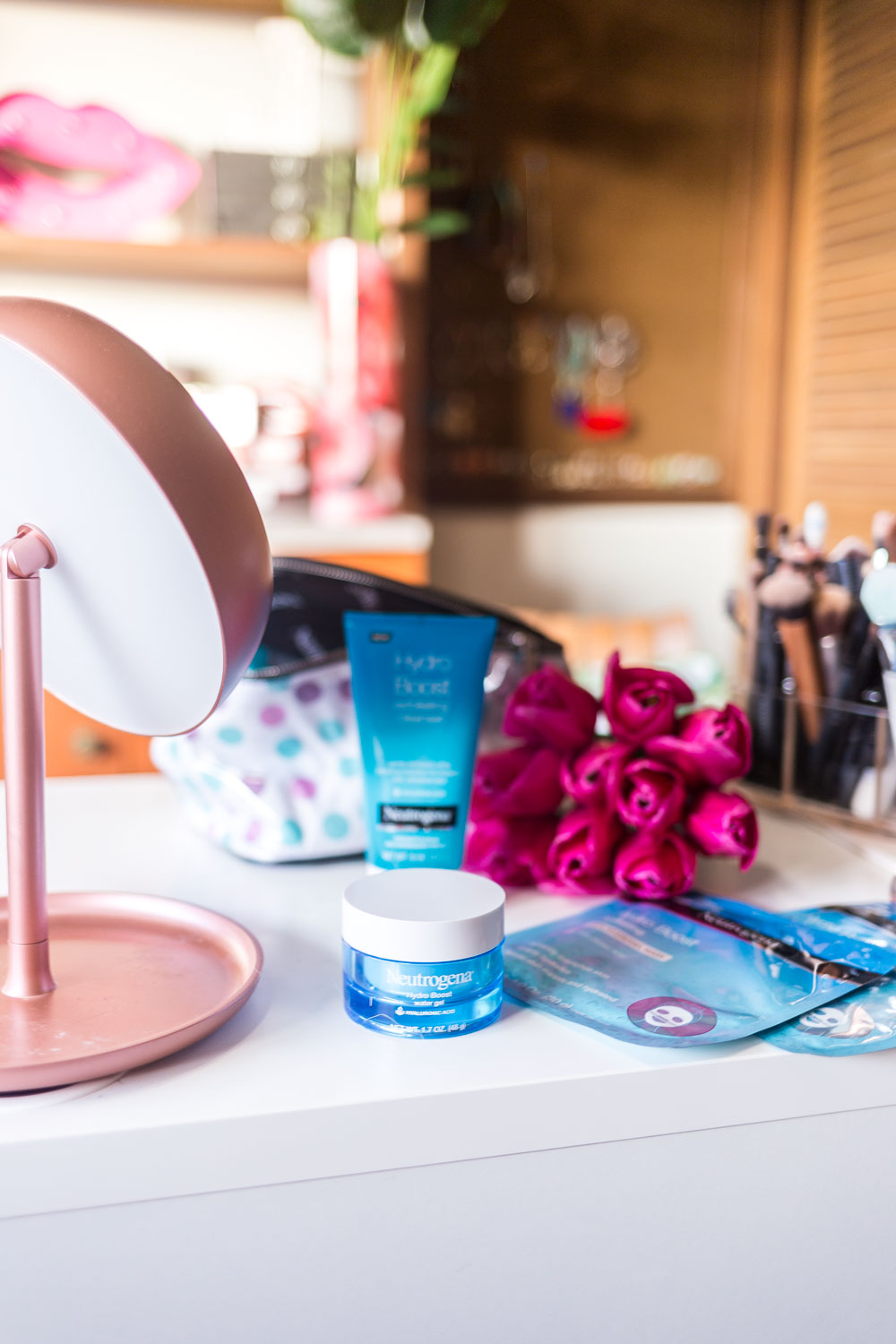 Step 6: Establish a skin care routine, and stick with it
Step 6: Establish a skin care routine, and stick with it
Great tips!! I love the advice to be gentle to your skin. So many do way too much.
Agreed! It definitely was something I was guilty of because of so many mixed messages when it comes to marketing products to those with acne. Live and learn for sure!
My daughter struggled with painful cystic acne too. She tried proactive and dermatologist prescribed medicines and the light masks that seemed to work at first but the thing that works amazing and she has been so happy with is Curology which you mentioned in the article. The service has been a godsend because unlike regular dermatologists, they are available to communicate with you within 12 hours. You don’t have to wait weeks for an appointment. You try the product they blend specifically for your issues (you fill out some questions and upload pictures of your skin) and you upload a pic after a few weeks and they tweak the formula if necessary. They continue to follow up and they send you the product so the new one comes just before the last one is done. She uses ONE product, and they’ll recommend other over-the-counter products but they don’t try to sell you a bunch of unnecessary over-priced items. It costs her about $38 a month which is cheap compared to all the doctor visits, prescriptions, etc that we were paying for before. But the very best thing about it is she can go without makeup and feel confident and beautiful in her bare skin. I would highly recommend it to anybody.
I’m so glad Curology is helping her! I wish it had been around when my acne was at its worst – I’ve heard nothing but good things about it.
Come back and see me again anytime. I love that you are on this powerful journey and learning about yourself and helping people through the moving words in your blog along the way.
Thanks so much, Hannah! I definitely hope to stop in for another facial in the future. :)
Hi Jenn – I suffer from breakouts too and have been reading about red light therapy for that. I am going to give it a try
I hope red light therapy helps! I never did go down that road but know it’s very helpful for some!